Beginning aquarists usually make the most stringent requirements for the first inhabitants of their artificial reservoir - the fish must be unpretentious, clean, have a peace-loving, accommodating disposition and interesting appearance. At first glance, it might seem that finding a fish that meets all of the above criteria is not so simple, but in fact you can find it in any pet store.
Today we’ll talk about thorny - one of the amazing, but, unfortunately, underestimated fish. Even its sellers often do not know about its unique qualities.
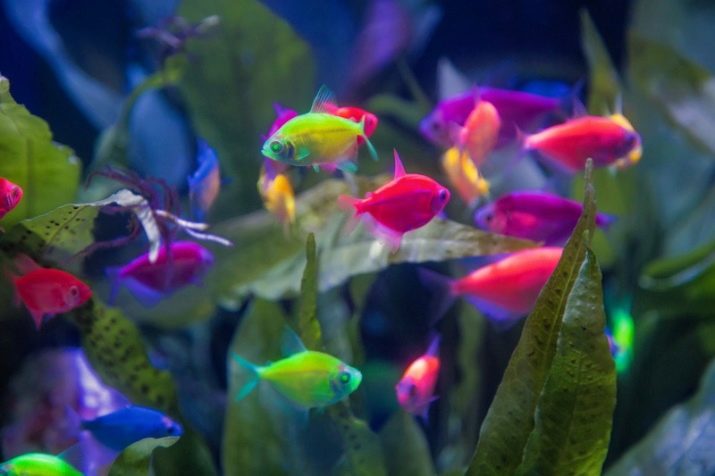
Description
In the natural habitat, thorns are found in slow-flowing small rivers of Argentina, as well as in Bolivia and Brazil. The shape and color of this fish is well adapted for survival in the thickets of aquatic plants, its high and laterally torso-torso makes it easy to move among the algae. In natural reservoirs, fish grow up to 6 cm, and in a home aquarium they reach 4.5 cm.
Kohler of thornsia is designed to help disguise the fish - its back has a pronounced olive tint, silver scales on the sides with notes of golden or azure color. Three dark gray, fairly wide strips cross the top of the body, which brighten with age: one passes through the eye from the top of the head, the second goes behind the gill cover, and the third originates from the level of the dorsal fin and is visible to the tail.Anal and fat fins are painted in dark colors, so the fish looks decorative and truly charming.
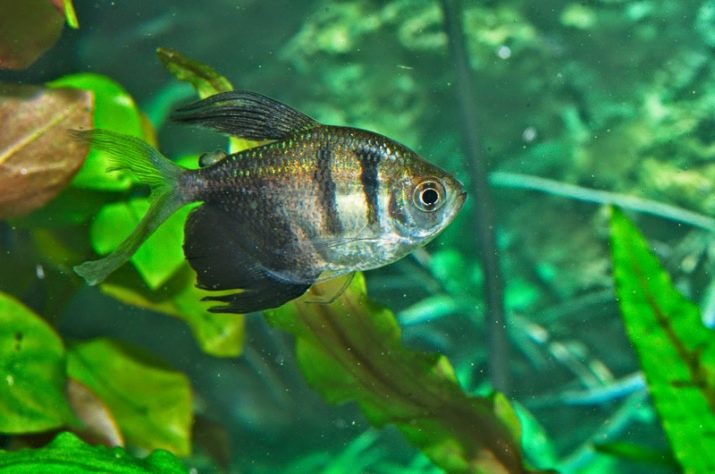
When creating a comfortable living environment fish can live in captivity for up to 5 years, keep in mind that these creatures are rather timid and react to any stressful situation by changing the brightness of their color, the pallor of the integument can also be a consequence of a change in the chemical composition of the water, so the thorns often become living indicators.
The body of the fish is diamond-shaped, the anal fin resembles a small skirt in black, it is thanks to this feature that thorns cannot be confused with the rest of the aquarium inhabitants. The dorsal fin is directed upward, near the caudal, the adipose fin is noticeable.
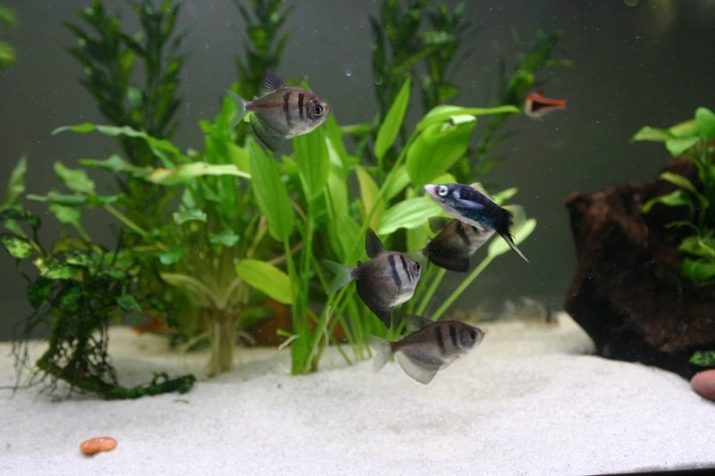
On the basis of common thorns, breeders derived a veil form, as well as a completely depigmented white albino. As a result of experiments, the gene of one of the species of Pacific jellyfish was introduced into the DNA of thorns, which allowed fish to be brought out with fluorescent flicker. A little later, the coral gene was introduced in a similar way, which gave a reddish color to the fish.
The combination of such varieties significantly expanded the color range of fish, which made them very popular among aquarists.
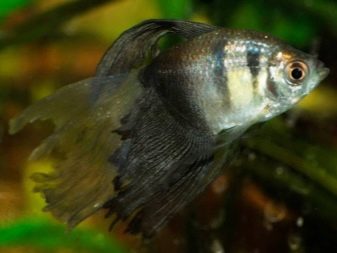
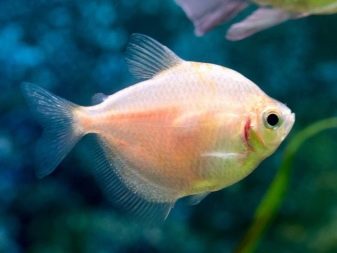
Types and color options
Fans of aquariums distinguish several types of thorns, but two varieties are considered the most popular.
- Terence caramel Is a product of the work of breeders. These fish are painted in bright colors using special injections. Thus, males become incredibly spectacular and decorative, but this color is short-lived and it is much weaker than in individuals with natural shades.
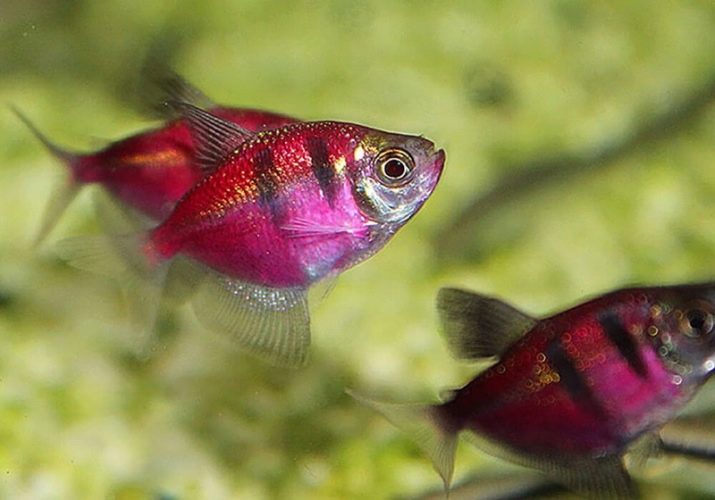
- Terence glofish was also bred as a result of gene modification. It got its name due to the fluorescent radiance, and the brightness of the color directly depends on the action of ultraviolet rays. Such fish can have the most interesting colorful shades.
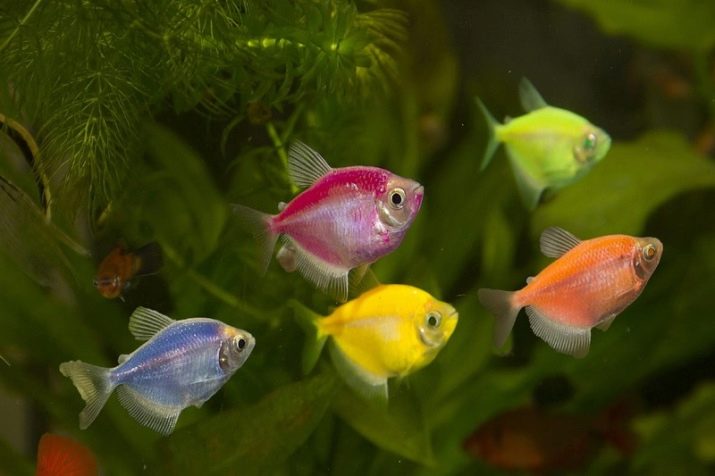
The color of these varieties is as follows:
- blue
- mint;
- green
- light green;
- Violet
- yellow;
- purple
- pink
- saturated red;
- blue
- light orange;
- raspberry;
- rainbow
- striped;
- multicolor.
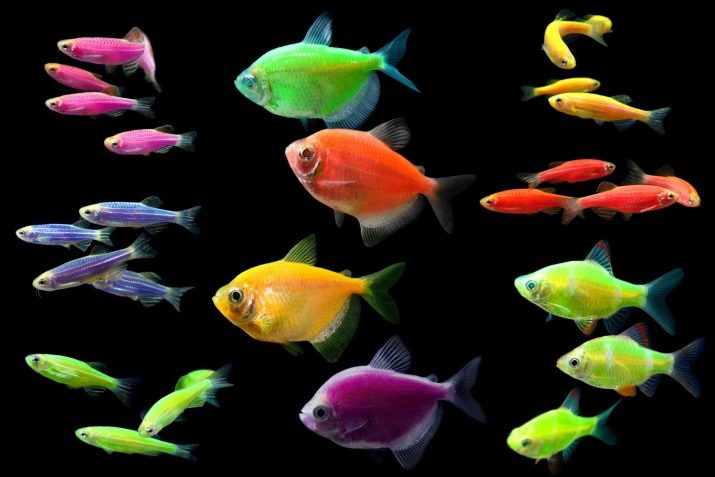
Unlike caramel, Glofish thorns can transmit their color to offspring. It should be noted that transgenic individuals do not differ at all from the most common ones; when creating a comfortable living environment, their lifespan is not lower than that of their prototypes.
But caramel treated with special chemical dyes is not so resistant to disease, so it lives less. BesidesThis difficult procedure often leads to death even at the staining stage. This is not surprising, because in order to give ternation the desired shade, it is first eliminated from the natural color and protective coating of mucus. To do this, the fish are transferred to a weak acid solution, and then placed in a bath with dyes, this treatment causes damage to the glands that secrete mucus, therefore no more than 10% of fish survive to the store shelves.
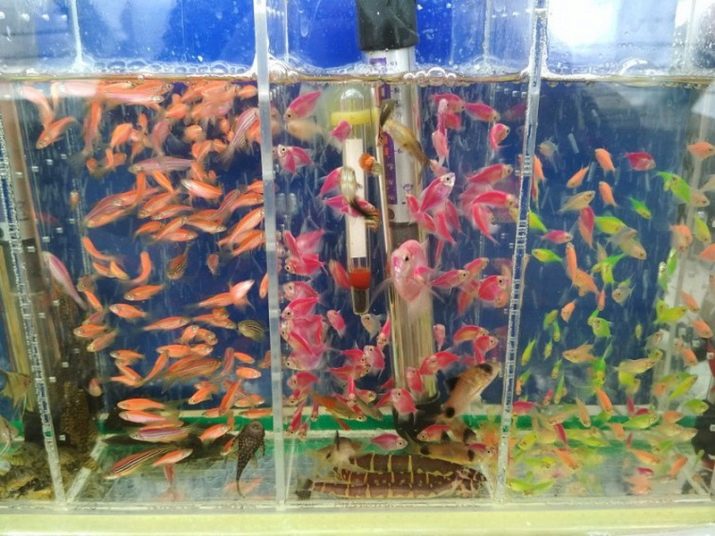
How to distinguish a female from a male?
Sexual dimorphism in thorns of all kinds is not particularly pronounced, therefore, only an experienced aquarist with special skills and knowledge can distinguish a female from a male. So, males differ in the following features:
- small size;
- slightly flatter body;
- bright and contrasting colors;
- pronounced whitish fringing of the caudal fin;
- slightly elongated caudal fin lobe.
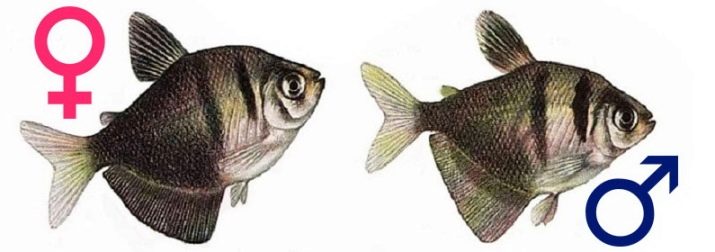
Important! In females, the fins are light, almost transparent, the abdomen is slightly more rounded than in males, and the back is wide.
Aquarium Care
Terence is rather unpretentious in leaving, therefore beginner aquarists love this fish so much. These creatures unpretentious to the conditions of detention and feed, and any violation of water quality is immediately answered by the changed body color - this becomes a signal for the owner about the need to adjust the parameters of the reservoir.
The thorns are very active pets, during their games they are quite capable of jumping out of the reservoirTherefore, the aquarium must be closed with glass or a lid. If you are breeding fish of thorns of glofish, then it is better to use a special blue backlight, since it is in this color range that the luminescent properties of the fish are fully manifested, although they will look harmonious with the most ordinary lamp.

In nature, thorns live in bodies of water with a steady flow and an abundance of aquatic plants, while a layer of fallen leaves softens the water and slightly acidifies it, which is why in the aquarium you need to reproduce the characteristic features of a natural biocenosis. To do this, you need to prepare a tank of 40 l or more, it is desirable that it is shallow (50-70 cm), but has a considerable length. The optimal parameters of the liquid are as follows:
- temperature - + 21-25 degrees;
- acidity - 5.5-7 pH;
- rigidity - within 6-16 units.

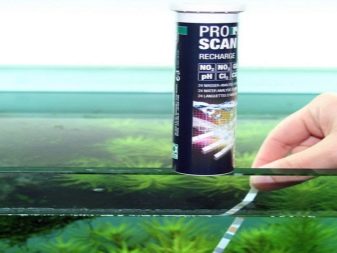
Fine pebbles or river sand, preferably of light color, are usually used as soil - against the background of such a substrate, a group of black fishes will look especially impressive. The presence of various grottoes and caves is not necessary at all, since the fish are hiding in the thickets of aquatic flora, but the presence of vegetation in the reservoir is welcome. So, in the background, it is best to plant a high-stemmed ambulia - it creates the effect of openwork thickets of a saturated green hue.
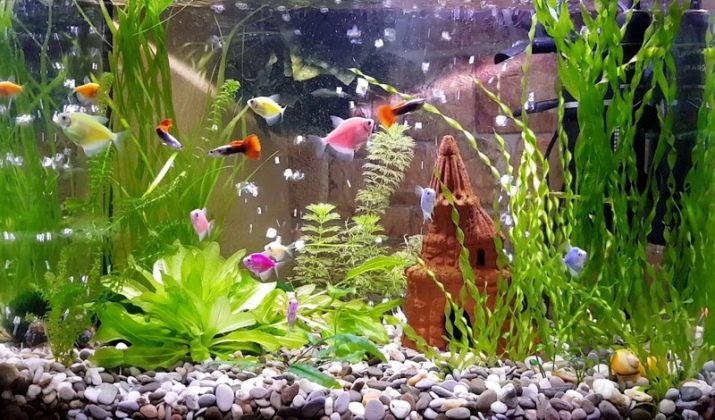
Buses of kombomba, elodey, as well as cryptocoryns of Blass look very beautiful in the aquarium.
Ternation needs oxygenated water: A prerequisite for maintaining the full growth and development of fish is the installation of a compressor, which will be responsible for aeration, as well as a filter, which will prevent water pollution.
It is best that the filter element is peat, as it softens the water a little and gives it the necessary acidity. Each week, water should be changed up to 30%, experienced aquarists advise to produce it slowly, changing in small portions so as not to disrupt the existing biocenosis.
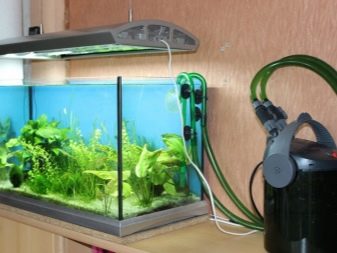

What to feed?
In nature, thorns feed on worms that hit the surface of the water, small zooplankton and the larvae of various insects. Aquarium species can be called omnivorous with full confidence - they use everything that is in their area of vision, they like ready-made cereals, live food, and frozen seafood. However, keep in mind that the structure and location of the mouth does not allow thorns to pick food from the bottom of the aquarium, therefore, feeding is best done dosed, so that the fish have time to catch the falling food.
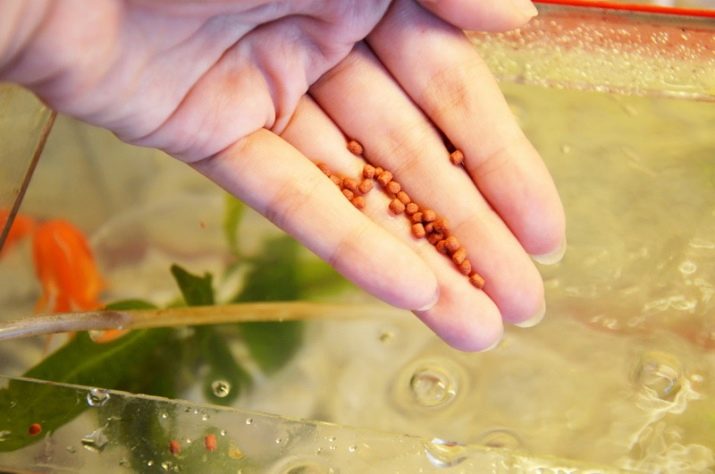
Be careful - thorns really like to eat, so they are prone to obesity. It is very important to correctly calculate their menu to prevent overeating.
Preferably fish nutrition was as diverse as possible. In the diet, you must certainly include plant components. If you offer thornsia only one type of product, most often this leads to a metabolic disorder, which has a detrimental effect on the function of reproduction and causes disease.
It will be useful to enrich the feed with vitamin-mineral complexes, especially during spawning, during the stage of active growth of young animals or when the pets are relocated to a new tank. The use of multivitamin complexes enhances immunity, strengthens the skeleton, and determines the color saturation.

Fish is fed twice a day, once a week you can arrange a fasting day, when feeding is minimized or not done at all.
Possible problems
Ternation usually does not cause much trouble to its breeders, but they can create certain difficulties. These fish are in good health, but sometimes they become ill that manifested in the following changes in appearance and behavior:
- fish become inactive or, conversely, restless;
- often begin to rise to the surface, opening his mouth and swallowing air;
- respond poorly to any external stimuli.
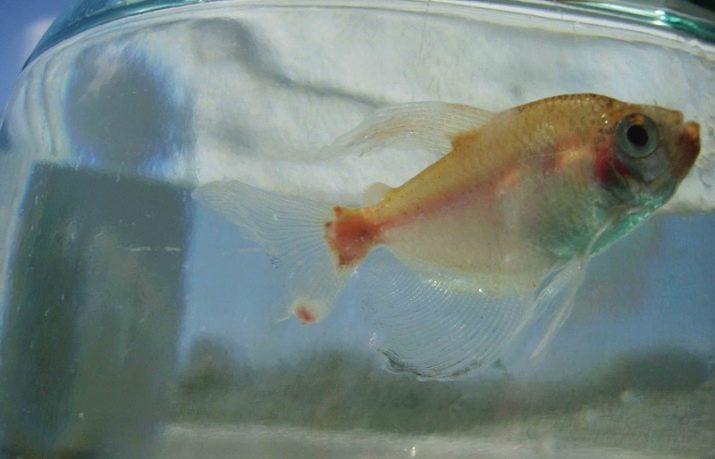
Most often, diseases of aquarium thorns become the result of a variety of reasons. One of the most common is improper maintenance of the aquarium. With low acidity, thornsia often develops acidosis, with a rare change of water or with poisoning with ammonia - acidemia. In both cases should increase the water temperature to + 29-30 degrees and treat diseased fish using salt baths.

A bacterial infection is manifested by the following symptoms:
- filamentous feces;
- excessive mucus on the gills;
- the appearance of whitish spots on the fins;
- uneven coloring of gills and scales.
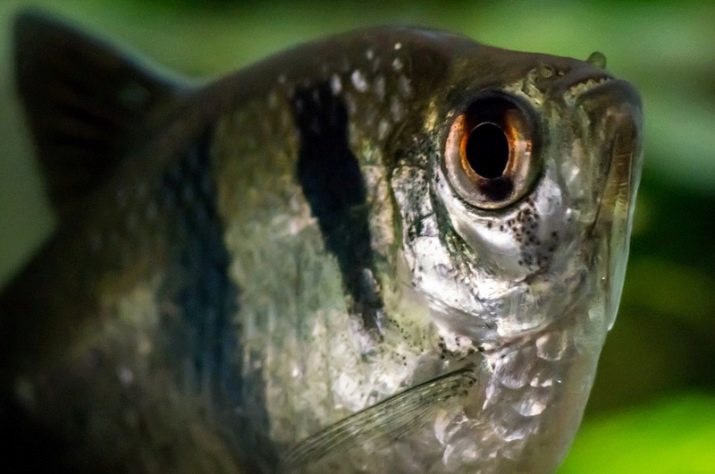
An attentive breeder can see that the fish are getting smaller - this also directly indicates the development of pathology. At the first sign of infection, you need to bathe your pets in a 2% sodium chloride solution and keep the fish in it for about half an hour, after which they are washed under running water and returned to the aquarium.
Often, beginners in the breeding of fish observe signs that can scare them, but in fact they should not cause concern, namely:
- the appearance of dense growths on the lips - they are necessary for fish in order to scrape off plant foods;
- growths on the head or gills - they make fish even more spectacular and decorative;
- second dorsal fin, reminiscent of a wen without lucid elements.
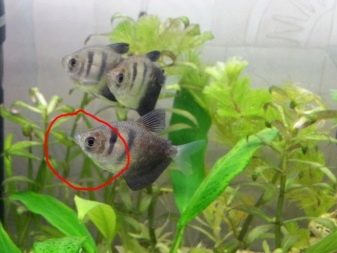

Sometimes the thorns swim sideways and chase each other - all this is completely normal and is a sign of the health and well-being of the pets.
Breeding
Even an inexperienced aquarist can get numerous offspring from his thorns, for this you need to follow very simple rules. Usually, brightly colored, motile, and necessarily healthy looking fish are selected from the flock for breeding. It is advisable to transplant them into a special spawning tank with a volume of 12-15 liters, the water level in it should be kept at around 15-20 cm. For breeding thorns it is optimal to use water with the following characteristics:
- stiffness - 5-10 units;
- acidity - 6.5-6.7 pH;
- temperature - 26-28 degrees.
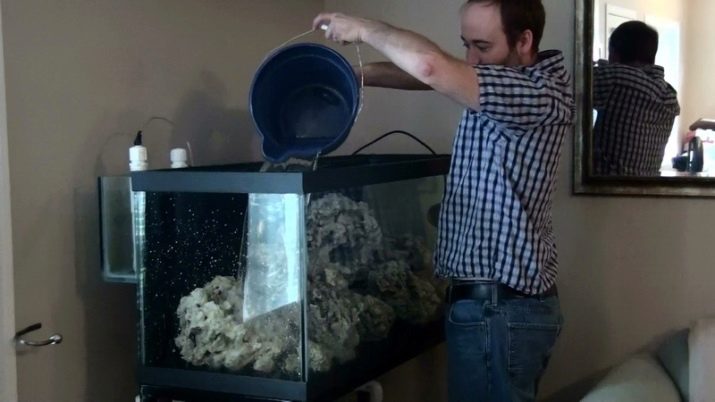
Tap water before filling spawning is necessary soften by boilingPeat extract will help to achieve the necessary acidity. For fertilization, you can take a couple of fish, or you can use a small group with a predominance of males.
It is important that bushes of small-leaved plants are located in the spawning grounds, they are used by females as a basis for placement of eggs. It will be useful to transfer the fish to live food, which stimulates the early onset of spawning.
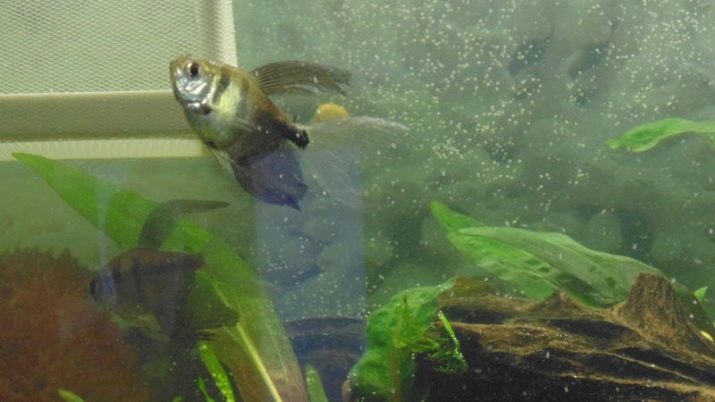
Mating games begin with the fact that the male begins in every possible way to caress the female, swims in circles near her, thereby forcing him to rise into the upper layers of water. During such "dances", the male carefully presses on the abdomen of the female with its fins, thereby stimulating the spawning. At a time, the fish throws 20-30 eggs, which are immediately fertilized by the male. These manipulations are repeated many times, up to the final emptying of the abdomen of a female. Typically, the total number of eggs varies from 500 to 2000.
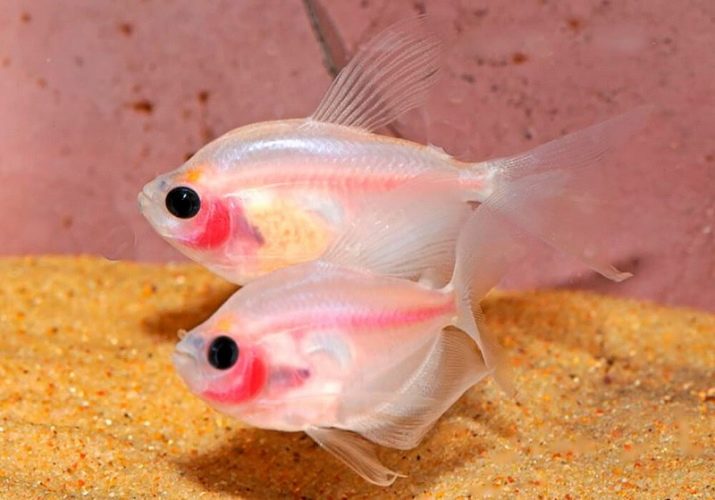
Caviar descends very slowly, settling on the leaves of plants. After the spawning is completed, part of the water should be replaced with fresh, after which the parents are transferred back to the aquarium. If this is not done, they may well enjoy their future offspring.
To speed up hatching water temperature is increased to +28 degreesthen the fry appear already after 2.5 days. Larvae do not need special nutrition, they get all the necessary nutrients from the yolk sac, but fry need to be fed with zooplankton, live dust or infusoria at least 2 times a day. After a month, the young growth doubles in size and the fish can already be moved to a common aquarium.
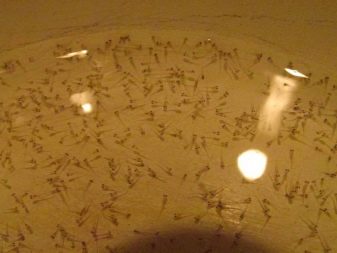
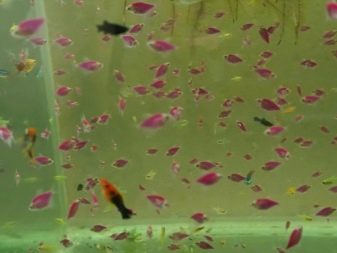
Important! A sexually mature pair of thorns is able to give offspring 4-5 times with an interval of 10-14 days.
Compatible with other fish
An important factor in the successful content of thorns in the aquarium is species compatibility. The fact is that each fish has its own character, temperament and behavioral characteristicswhich often do not allow aquatic inhabitants to get along with each other. Despite the fact that thorny is a peace-loving fish, it is still prone to bite its neighbors in the aquarium from time to time. Do not settle luminous thorns with cichlids, barbs and other aggressive fish. It is best to pick up such neighbors as:
- tetra
- zebrafish
- scalaria;
- cardinals;
- neons
- swordsmen.
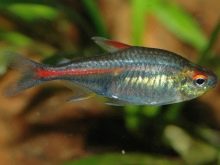

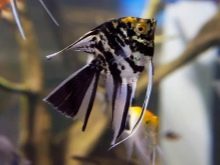
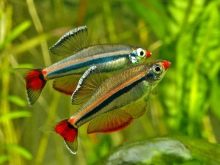
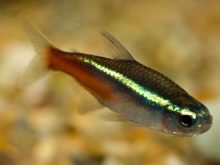

Any veil fish can seriously suffer in a common aquarium, since the thorns are unlikely to deny themselves the pleasure of biting their fins. Viviparous neighbors will also not be the best choice. Adult thorns have a rather hooligan character, so they are quite capable of bullying small loners as well. It is advisable to keep them in a small flock of 7-15 individuals, in this case, their temperament will subside a little, and they will turn all their attention to their "brothers in mind."
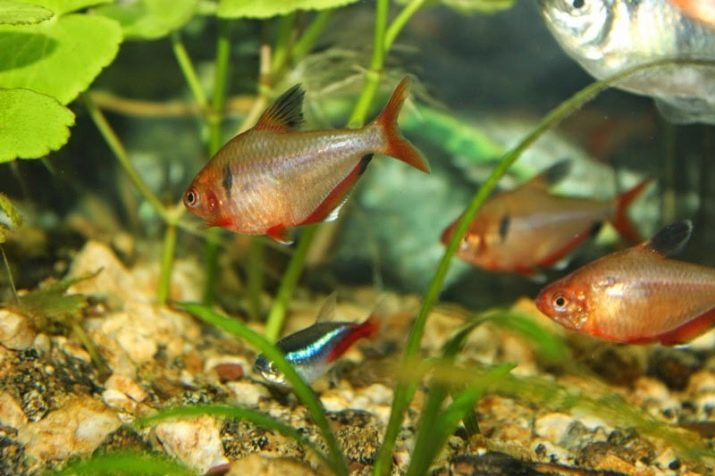
In the company they will have fun frolic and chasing each other, if the fish live alone, they will become timid, shy and spend most of the day in the dense thickets of water bushes.
Review Reviews
The following facts speak in favor of the home content of thorns:
- unpretentiousness and exceptional endurance;
- quick adaptability to changing living conditions;
- undemanding to food;
- simplicity of maintenance;
- friendly character and good cohabitation with relatives.
The disadvantages include the excessively high activity of thorns, which often causes damage to the fins of the veil fish, as well as the tendency to bite too slow inhabitants of the aquarium.
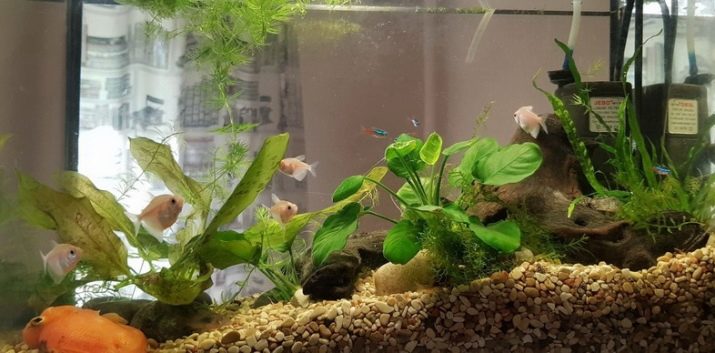
See how to keep and breed thorns in the next video.










